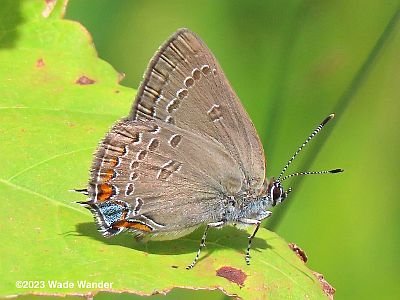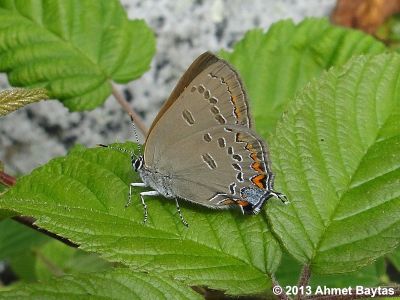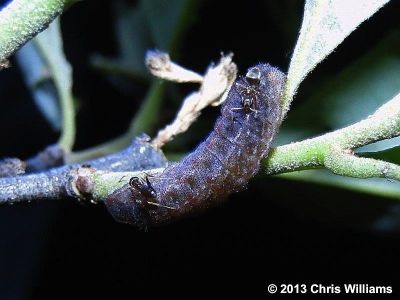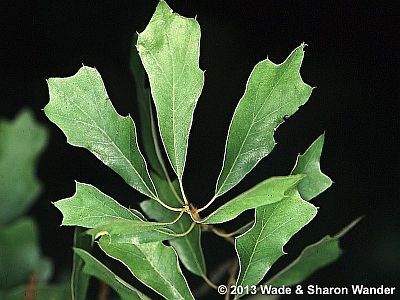New Jersey Butterfly Club
A chapter of the North American Butterfly Association (NABA)
Edwards' Hairstreak
Satyrium edwardsii
Identification: Very small—size of thumbnail. Almost never seen with wings open. Sexes similar. Below: FW and HW light grayish-brown, with postmedian markings consisting of clearly-defined, white-ringed, dark ovals rather than the white-edged, darkish bands of many other Satyrium hairstreaks, such as Banded. Several orange spots along HW margin, interrupted by a large blue spot with a tiny, hard-to-see orange cap. Similar hairstreaks: Wing markings on Banded and Hickory are bands rather than distinct ovals.
NJ Status and Distribution: Resident. Uncommon, but can be locally common in suitable habitat. Even more rare and local in South Jersey.
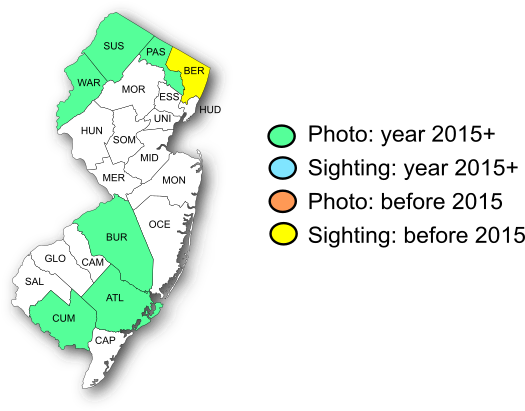
Habitat: Most often reported from utility line easements, and mountaintop ridges and balds, with Scrub Oak.
Flight Period: One brood that flies from mid-June to early August. Extreme dates: North Jersey 6/15-8/3; South Jersey 6/14-7/24.
Caterpillar Food Plants: Scrub Oak (Quercus ilicifolia).
Overwintering Stage: Egg.
Good Locations: Crater Lake Road, Delaware Water Gap NRA; Monument parking lot at High Point SP; Sunrise Mt. (Stokes State SF), Ramapo Mountain SF, Peaslee WMA.
Comments: This species is dependent on ants—Formica integra, and possibly other species in this genus. The ants protect the caterpillars, “escorting” them from an ant-built shelter at or near the base of a host plant, up into the branches where the caterpillars feed on leaves at night, and then back to the shelter. What’s in this for the ants, you ask? Apparently, irresistibly sweet secretions from the caterpillars.
